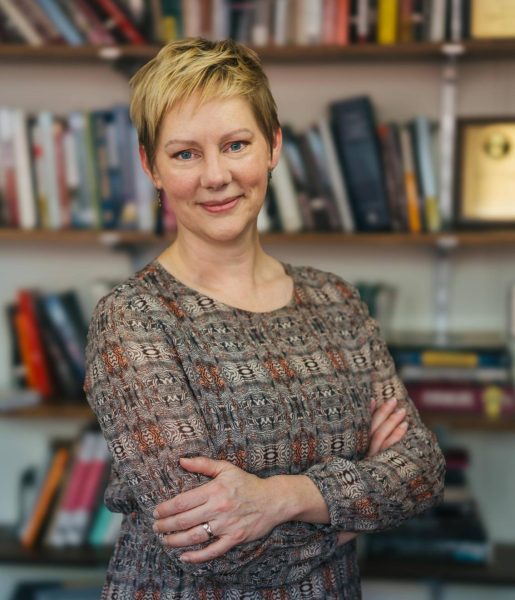Movie review: ‘Shazam’
“Shazam” follows Billy Batson, a foster kid attempting to find his biological mother. After colliding with the law, Batson is placed in a new home. Eventually, an elderly wizard gives his powers to Batson. For the rest of the story, Batson is able to transform into an adult superhero. However, the evil Dr. Sirvana wants to become an entity of unchecked power. Inevitably, these wizards will battle one another.
Director David F. Sandberg, widely known for “Lights Out” and “Annabelle: Creation,” crafts an exceptional picture, full of awe and wonder. Like Richard Donner’s original Superman film, “Shazam” has an amusing identity, which is meant to give audience members large doses of positivity. The script, written by Henry Gayden, is loaded with clever gags and comically efficient dialogue. At times, certain jokes do not work, but as a whole, “Shazam” is a consistently funny picture.
Asher Angel plays young Billy Batson. Zachary Levi plays the adult, super powered version of Batson. Occasionally, the performances do not feel like the same person. Young Batson is more serious. Older Batson’s humor knows no bounds. Thus, these differing personalities often contradict the other.
Luckily, the top notch performances make the inconsistent characterization of Batson less obvious. Angel wonderfully portrays a young boy, filled with seriousness, innocence and naivety. Because of Angel’s dramatic acting, each emotional scene feels natural. The pain comes out onto the screen, proving to us that every hero needs a believable emotional state. Angel has a bright future, and it will be interesting to see his career develop.
The standout of the film is Levi. He is having the time of his life. In turn, his rendition of Shazam is infectious. Many adult actors would make this boyish role feel unnatural, but in this case, Levi perfectly embodies the spirit of a boy embracing his upgraded nature. Simply put, Levi is a force of cinematic liveliness. Credit must also be given to Jack Dylan Grazer, who plays Freddie Freeman, Batson’s friend. Grazer proves himself to be a boisterous source of entertainment.
In a wise turn of events, Sandberg utilizes horror aspects to set up the villain, Dr. Sirvana, a man who has ancient monsters by his side. Like Ivan Reitman’s “Ghostbusters,” these creatures come from statue-like cocoons. At first, the creatures are given an effective opening that feels ripped out of a horror film. For one, the opening showcases how powerful Sirvana is. From a literal standpoint, he has an army that takes out opponents with animalistic precision. But also, it becomes evident that Dr. Sirvana is at the point of no return. He cannot be helped. As a result, Dr. Sirvana is a true threat to the protagonists. The stakes are firmly set.
Every hero needs a great villain. Credit must be given to Mark Strong for bringing Dr. Sirvana to the big screen. His enthusiasm for the villainous role pushes the film to even greater realms. The character may seem over the top, but that’s not a bad thing. “Shazam” is a film that embraces the joyous essence of comic book mythology. Thus, it shouldn’t be a surprise that the comic book villain is campy. Due to Strong’s commitment and gravitas, every aspect of the character works, and as a whole, we get a top tier villain who makes every encounter special.
Yes, this comic book tale deals with superheroes, wizards and demonic creatures. But at the center of the film, we have a foster story that will resonate with audience members. In simple terms, the foster home story gives the film a ton of emotional weight. Sandberg’s story ties into the notion of longing for a family. We get a group of children who come from fractured families. Through their own set of adverse circumstances, each character is able to bond with the other, and as a result, a family is created.
In retrospect, the foster children could have been developed a little bit more, but overall, their arcs are still satisfying, due to the charming performances, witty dialogue and Sandberg’s cinematic optimism. Eventually, the foster children get involved in the action. As the adventure ensues, the story echoes Richard Donner’s “The Goonies,” a tale where children battle adverse circumstances with the intent of finding a lost treasure. This section of the film is a sight to behold, and reminds us of what it is like to have friends by our side. Later, the comic book tale becomes an even bigger spectacle, telling us that any hopeful human being can achieve wondrous forms of progression. In other words, if we have optimism, we can unlock our super heroic potential.
Most notably, “Shazam” tells us that our background shapes us, but it doesn’t define us. Through decision making, we define ourselves. Batson and Dr. Sirvana have similar backgrounds, but they become opponents. Due to a dysfunctional upbringing, Dr. Sirvana turns to darkness. He refuses to forgive human beings. Batson’s unfulfilled upbringing creates a ton of pain, but it doesn’t affect his sense of hope. In the long run, Batson’s hopeful nature creates a legitimate family, full of chemistry, compassion and love. It’s a reminder that life is what we choose to make of it.
I highly recommend “Shazam.” It’s another step in the right direction for DC films. Warner Brothers is building something special, and fans should be excited about the future. If the films continue to be successful, we will receive stories that focus on new characters. But also, we will get stories that flesh out established characters. At this minute, I am ready for a Shazam sequel. Bring on Black Adam!
My Grade: A-
Dillon McCarty can be contacted at [email protected].
Your donation will help continue the work of independent student journalism at Marshall University. If you benefit from The Parthenon's free content, please consider making a donation.






